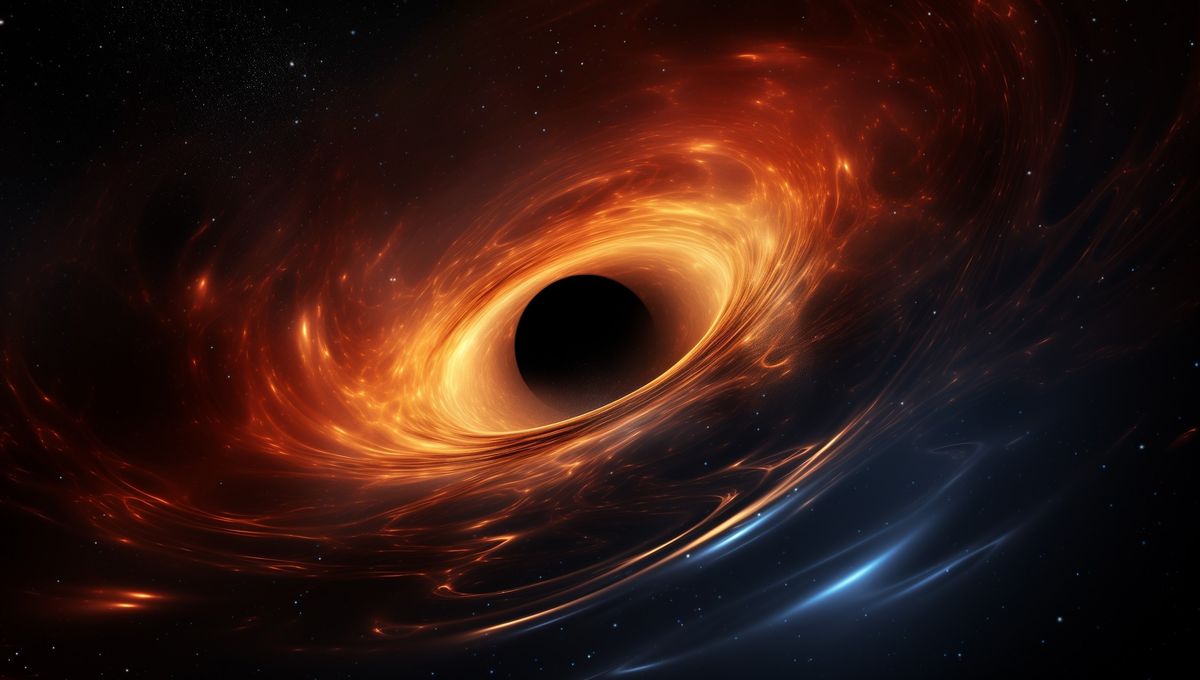
For several decades, scientists have toyed with the idea of primordial black holes. In the smorgasbord of particles and forces and energy of the beginning, slight overdensities might have led to the formation of small black holes. But not too small. Because under a certain limit, these objects would have wiped out the universe already.
This might appear counterintuitive if you imagine black holes are unstoppable devourers of matter. But black holes are mostly chill as long as you stay away from them. So how do these extreme objects cause the end of the universe? They might mess with the Higgs Boson. Scientists have now worked out a connection between the two and luckily got the reassurance of why we are still here.
We might not even be there anymore to actually see it because we might just completely fall apart.
Dr Lucien Heurtier
The Higgs boson is the particle that gives everything in the universe mass. Mass as we know it is an interaction between the particles that make us, for example, and the Higgs field. We have proven its existence for just over a decade and current understanding suggests that it’s in a metastable state. Potentially, its energy could be lower and that is a problem.
“If [the Higgs field] would suddenly change its properties then light particles could become potentially heavy or the other way around, and then physics forces, matter, masses will all change, and then the world around us would not be the same anymore. We might not even be there anymore to actually see it because we might just completely fall apart,” Dr Lucien Heurtier, from King’s College London, told IFLScience.
It is likely that this change would destroy the universe as we know it in a process called vacuum decay: a bubble of true vacuum – where the lowest possible energy for the Higgs exists – will expand and destroy the universe. Yes, that is definitely bad news, but there is also good news.
As far as scientists can estimate, the metastable state the Higgs is in is actually very stable, not just for our puny human lives but also for the long-term evolution of the universe. Left to its own device, the Higgs won’t spontaneously jump to its lowest energy state for longer than the current age of the universe.
“The time it would take if there is nothing else happening around is actually longer than the age of the universe, much longer, which means that it’s normal that we have not seen that happening yet,” Dr Heurtier told us nonchalantly about the potential destruction of all reality. Basically, you still have to pay your bills; the end of the universe is not coming.
Can something trigger this devastating cascade of death bubbles? The answer is yes: primordial black holes. All black holes interact with space-time around them and in doing so, they release Hawking radiation. This radiation takes some energy away from the black holes. The smaller the black hole, the higher the energy. It turns out that below a certain mass limit, the Hawking radiation and the gravitational pull of the black hole provide such energy to the field that it would allow the Higgs to get out of the metastable place it is now and get ready for universal destruction.
The new research builds on previous work by Ruth Gregory and Ian Moss but goes a little further by considering how the temperature changes around these black holes. As they release Hawking radiation these objects get smaller. As they get smaller they get hotter because they release more Hawking radiation. This allowed the team to revise the mass limit of these primordial black holes. If there was one that weighed less than one billion tons, it would have triggered a false vacuum decay by now.
That’s a little more than the mass of all the humans currently alive on the planet. And if you are curious like me, the plasma that these black holes would produce is of the order of 1024 degrees. That’s a million billion billion degrees. Or, 100 billion times hotter than what you might get in the most extreme supernovae.
In some sense, either the standard model is true and primordial black holes should not have existed below those masses, or primordial black holes did exist, and that would somehow act as proof that there should exist some higher energy physics that we have not accessed yet.
Dr Lucien Heurtier
The new study makes a compelling case for the non-existence of primordial black holes below a certain mass. However, Dr Heurtier stresses that it comes with a caveat about the standard model of particle physics. As a physical theory, the standard model is phenomenal but it is limited as it doesn’t include gravity and hypothetical phenomena such as dark matter and dark energy.
So the impossibility of these small primordial black holes rests on the assumption that what lies beyond the standard model doesn’t help stabilize the Higgs field under those extreme temperatures and gravity conditions. But if we were to discover evidence of these black holes, we might learn something profound about particle physics.
“In some sense, either the standard model is true and primordial black holes should not have existed below those masses, or primordial black holes did exist, and that would somehow act as proof that there should exist some higher energy physics that we have not accessed yet because the Large Hadron Collider is limited in energy,” Dr Heurtier told IFLScience.
The study is published in the journal Physical Letters B.
Source Link: Small Black Holes Couldn’t Have Existed After The Big Bang – Or They Would Have Destroyed The Universe